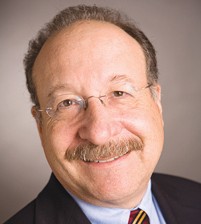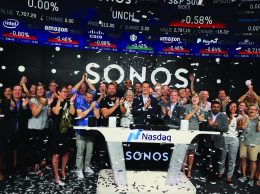
Henry Dubroff
The imminent departure of Macy’s from Santa Barbara’s Paseo Nuevo mall has triggered a round of hand wringing about the future of State Street, the region’s crown jewel of retailing.
Macy’s closing was not totally unexpected; the chain is in trouble and having two stores on the South Coast made little sense. But it comes at a time when State Street truly is at a crossroads.
Established merchants such as Churchill’s Jewelers have closed amid rising costs for rent and staff. A former shoe store near the Business Times’ offices has remained vacant for years because landlords are willing to wait it out for premium-paying tenants.
Over time, the region’s premier shopping area has become a bit less classy. Marshalls replaced Borders, Saks Fifth Avenue became Saks Off 5th and it’s not clear at all what will replace Macy’s.
For Maggie Campbell, executive director of the Downtown Organization of Santa Barbara, the closing of Macy’s is a call to action that comes as the group is gearing up for its 50th anniversary.
“It’s a time to reinvent,” she told me in a phone call on Nov. 10. “We want to call on the community to rise to the occasion.”
The picture is not all bleak. The national attraction of the Santa Barbara waterfront and the burgeoning restaurants, galleries and wineries of the Funk Zone make it a unique urban environment.
Just a few blocks off the city’s main tourism and entertainment thoroughfare, the technology industry is experiencing a Santa Monica-style renaissance. More than
$500 million in capital has poured into small corporate offices crammed into nooks and alleyways.
In a 21st century version of “It’s a Wonderful Life,” young professionals pedal to work on bikes and fuel up on oversized sandwiches from South Coast Deli.
The largest single employer in downtown is Sonos, an audio products and software company where founder John MacFarlane (see editorial) is stepping down to devote more time to mentoring young staff and supporting education in science and math.
Campbell and her organization have been thinking about the future of the State Street corridor for some time. The downtown organization will launch a comprehensive retail survey conducted with Downtown Works, a Seattle-based consultancy.
In addition to its growing ranks of tech firms, Santa Barbara’s rich history of architecture and design has left a legacy of firms that can contribute ideas for how the city should reinvent its downtown core.
“We have visionary business leaders,” said Campbell, who added that part of the goal is to be more “intentional about curating the mix” of opportunities as State Street goes through its next reinvention.
There’s also going to be a call to the community for merchants and businesses to share their story to provide a context for the retail study.
In fact, the history of downtown is a history of reinvention, dating back to the 1925 earthquake that, post-disaster, allowed Pearl Chase and others to re-imagine Santa Barbara as a city dominated by Spanish-style architecture.
The 1960s and 70s brought urban renewal and development projects to the table. And, in the 1990s, State Street evolved again when a Highway 101 underpass was created to tie the city core to the waterfront.
There will be challenges this time around as less public money is available for infrastructure but this is, after all, Santa Barbara.
“People have an emotional connection” to the city core, said Campbell.
And it’s that deep connection that makes me an optimist about the long-term future of downtown.
• Reach Editor Henry Dubroff at hdubroff@pacbiztimes.com.






 Print
Print Email
Email

















